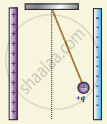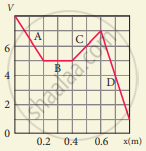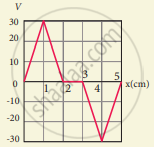Advertisements
Advertisements
प्रश्न
Suppose a charge +q on Earth’s surface and another +q charge is placed on the surface of the Moon,
- Calculate the value of q required to balance the gravitational attraction between Earth and Moon
- Suppose the distance between the Moon and Earth is halved, would the charge q change?
(Take mE = 5.9 x 1024 kg, mM = 7.348 x 1022 kg)
उत्तर
Mass of the Earth, ME = 5.9 x 1024 kg
Mass of the Moon, MM = 7.348 x 1022 kg
Charge placed on the surface of Earth and Moon = q
(a) Required charge to balance the FG between Earth and Moon
FC = FG (or) `1/(4pi epsilon_0) "q"^2/"r"^2 = ("GM"_"E" xx "M"_"M")/"r"^2`
q2 = G × ME × MM × 4πε0 = 320.97 × 1025
q = `sqrt(320.97 xx 10^25)`= 5.665 x 1013 = 5.67 x 1013 C
(b) The distance between Moon and Earth is
`1/(4pi epsilon_0) "q"^2/("r"/2) = ("GM"_"E" xx "M"_"M")/("r"/2)`
so q = 5.67 x 1013 C
There is no change.
APPEARS IN
संबंधित प्रश्न
A thin conducting spherical shell of radius R has a charge Q which is uniformly distributed on its surface. The correct plot for electrostatic potential due to this spherical shell is
Define electrostatic potential.
What is an equipotential surface?
Give the relation between electric field and electric potential.
Define ‘electrostatic potential energy’.
Derive an expression for electrostatic potential due to an electric dipole.
Draw the free body diagram for the following charges as shown in the following figure.

Draw the free body diagram for the following charges as shown in the following figure.

Draw the free body diagram for the following charges as shown in the following figure.

The electrostatic potential is given as a function of x in figure (a) and (b). Calculate the corresponding electric fields in regions A, B, C and D. Plot the electric field as a function of x for figure (b).


